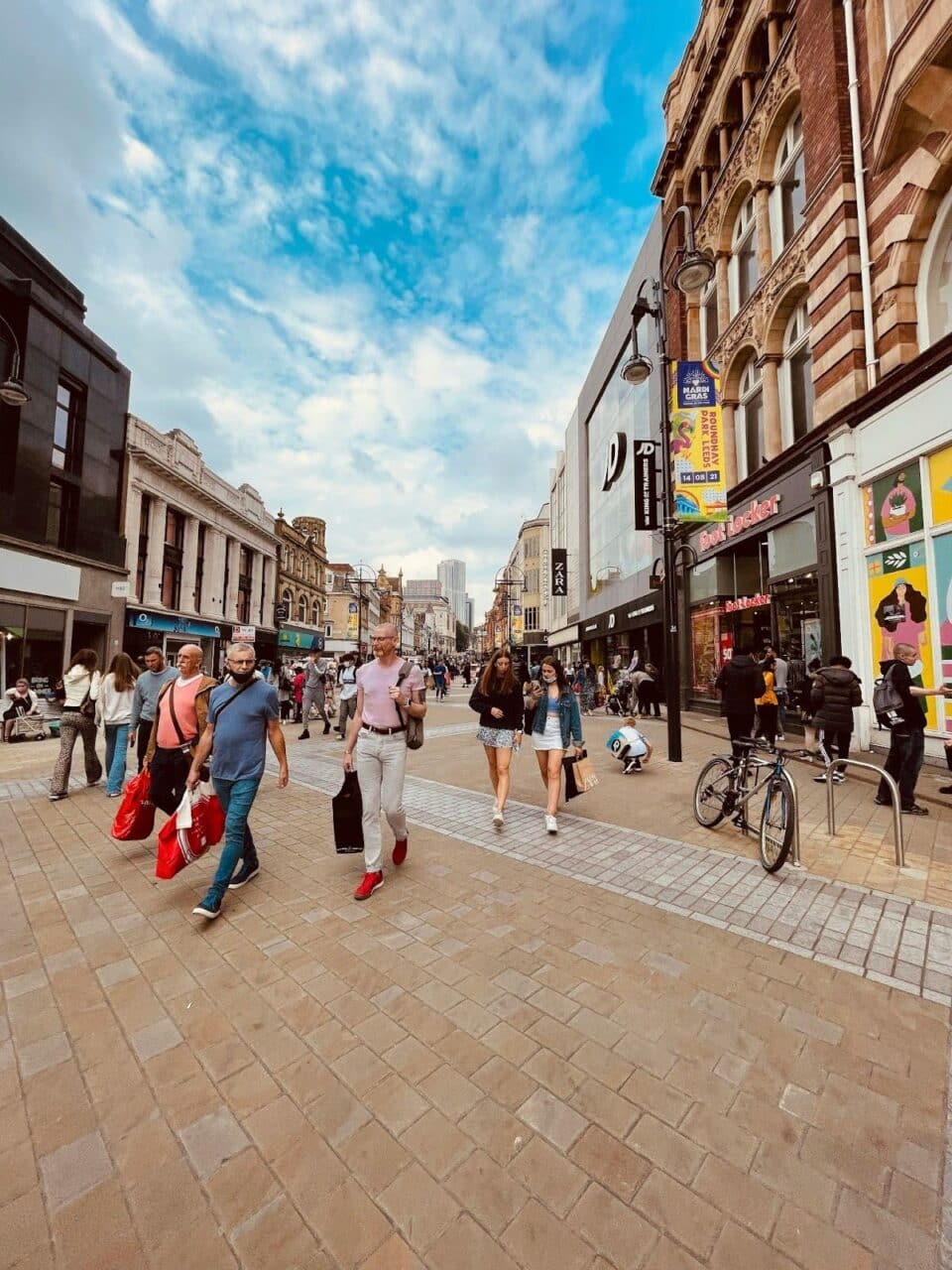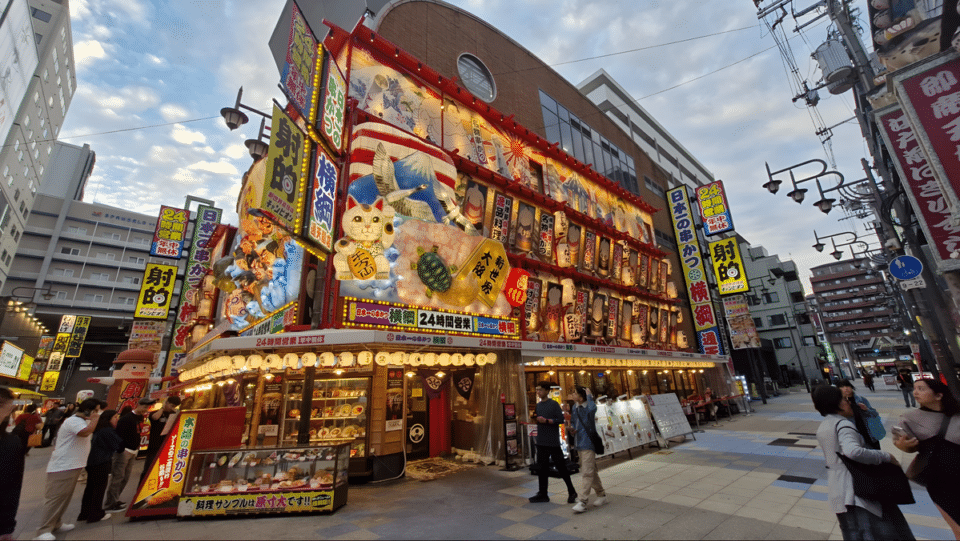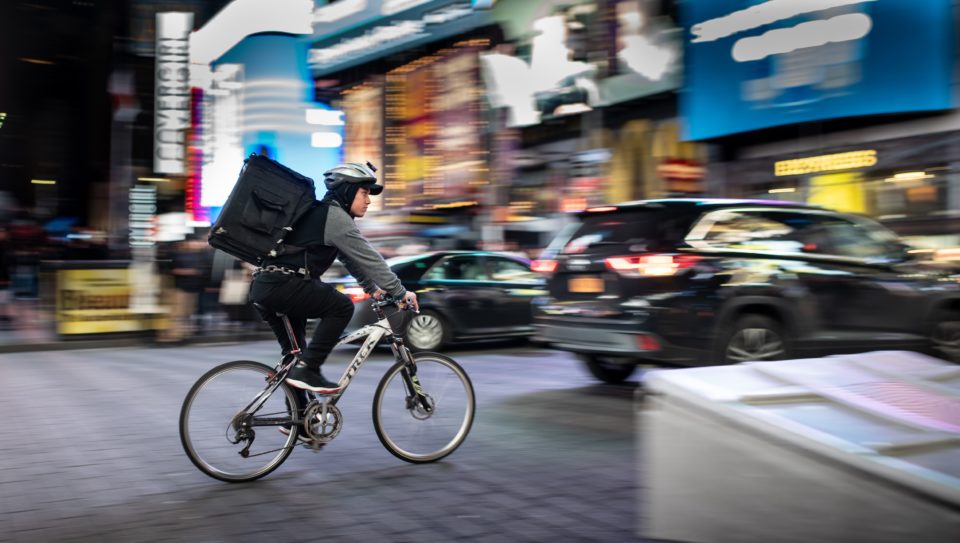Why Hullabalook is working to do away with legacy ecommerce
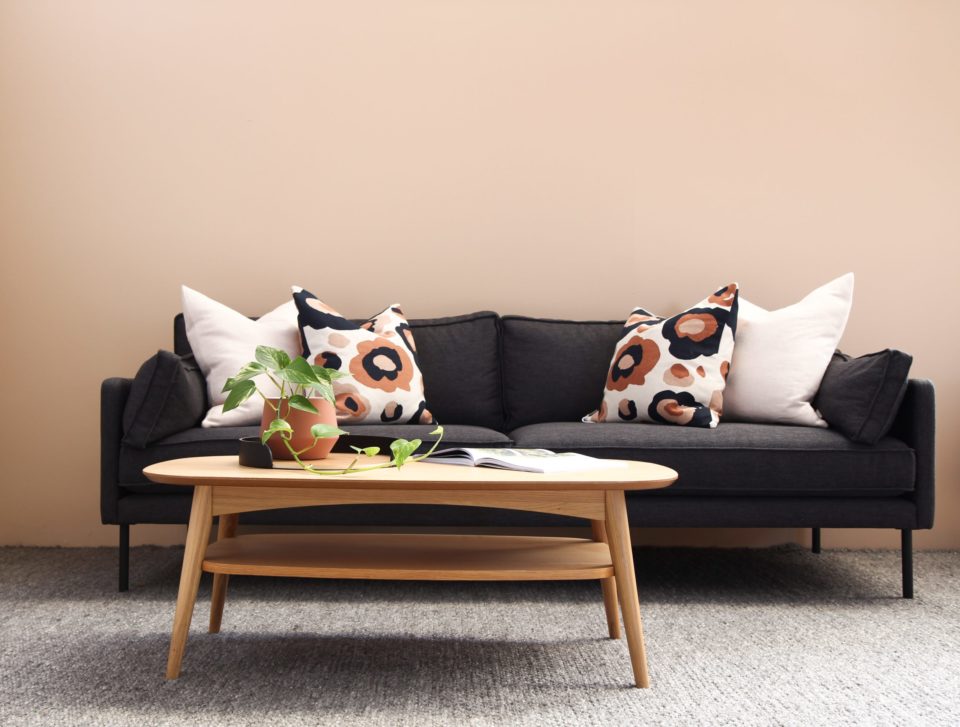
What’s the secret to great retail tech that’s worth investing in?
Making it simple enough for anyone to use.
Hullabalook knows this better than most.
Its storefront technology solutions are fun, can be used by anyone, and – crucially – can drive a 10-80X ROI.
Don’t confuse this with thinking the tech is simple. The beauty of Hullabalook is that these solutions use deep tech to solve the challenges of shopping online, but they make them simple for any shopper to engage with.
We spoke to co-founder Bryony Elliott about why Hullabalook is rewriting the way we think about online shopping – from questioning legacy ecommerce practices to truly personalised websites.
Bryony Elliott, Co-founder, Hullabalook
What does Hullabalook do?
We are a tech start-up based in London with a vision of making the shopping experience for consumers better. We do that through working with retailers to build better storefront technology for them.
Our clients include a lot of different furniture retailers, but we also work in other sectors.
Ultimately, it’s about making retailers’ massive product catalogues a lot more discoverable. Most retailers have so many SKUs now it’s very difficult for people to realise exactly how many products they have.
One of our clients, Sofology, has 200,000-250,000 different sofas. If you were to try and look through all of those sofas online as a shopper, you would quite literally be there for days. You’ve got to be able to find what you want faster.
We make that whole experience better, driving better results for retailers and making it more exciting and fun for shoppers.
If you go into a physical retail store as soon as you walk through the door you get a sense of what that brand is about. And it’s different in every store. But if you go to a retailer’s website, they’re all basically the same with some different colours.
When Amazon had the first real massive ecommerce offering there was a reason why websites needed to look the same, but there is nothing in technology that is forcing that to happen now. There is no reason why any retailer’s website needs to look anything like any other brand’s website.
I want to facilitate a world where people’s brands can really shine on their website.
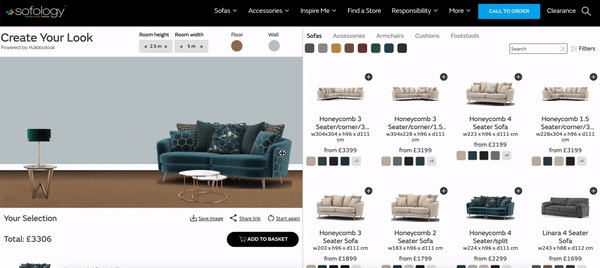
Can you talk us through some of your key solutions?
My favourite of the moment is our Stickers technology. This is essentially a room-builder; we take a retailer’s product catalogue and convert it into 2D ‘stickers’ that customers can move around a canvas, which looks like a room, to design their own spaces.
The 3D room planning tools that are out there tend to have a lot of buttons and are really quite difficult to use.
It’s really easy to make technology look complicated, but actually I think a lot of what we do is actually deep tech. It’s very tech heavy, but the art is making it not seem like that to the shopper.
I always try to create technology that my mum can use. I really passionately believe in the democratisation of technology. Great technology is technology that is well adopted, it isn’t always technology that looks super shiny or makes headlines. You know that you’ve built something amazing when everybody is using it, and everybody thinks that it always existed because it’s that intuitive.
For retailers, our Stickers technology helps them to across categories, which is something that they struggle with. They’re all trying to replicate that feeling of being in a real-life store and seeing a beautiful room set. It gives them the ability to really showcase their ranges and how they think about style and design and individuality.
Not only is it fun, but it works. It actually makes them money, which is brilliant.
We haven’t had anyone deploy our Stickers technology and see anything other than a totally amazing result. One of our customers, FonQ, has found that people using the tool spend 76% more than people not using the tool and increase their average order value by 44%.
We’re rolling it out into different use cases. It started very much as a standalone thing, but now we’ve got versions of it that are on product pages. We want to deploy it with QR codes so that it can be used in stores.
Another solution is Sizer technology, which can display products like sofas at scale. This means people can actually see how big or small a product really is and get a sense of what they’re buying. Customers can drag the grid to the size of sofa they want, and the products will change in real time to show the ones that are of that size.
We also do lots of image processing in almost all of our technologies where we look at the exact colours that are in products. Rather than relying on a retailer tagging a product as red when red can be anything from the deepest burgundy to hot pink, we actually know exactly what colour something is.
If somebody comes on and selects sage green, we will show them the sage green products and rank all of the products in order of exactly what colour they are.
Sizer also drives amazing results. GAIA who are a Mexican furniture retailer saw a 209% increase in revenue for people using ourSizer versus their previous sofa listings page.
For all of our technology, we target an absolute minimum of 10 times ROI for our retailers. We have a couple of retailers where it’s up in the hundreds, but the average is more around 40 to 50 times ROI, which is great.
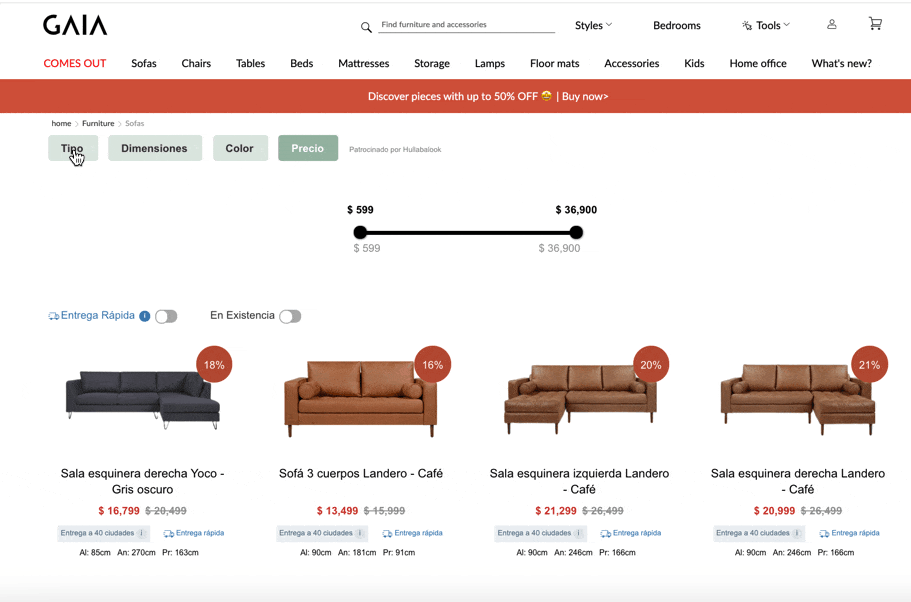
Are there any solutions that you have in development right now?
We’re always developing new solutions.
One that will go live soon is a solution that lets customers both positively and negatively filter on a product.
Let’s say that you’re going to a wedding and you’re looking for a dress. You know you’re not going to wear a white dress but in order to look at all of the dresses other than white you would have to select all of the individual colours in the filter.
Whereas what you want to be able to do is say, ‘show me everything but not white’. That’s pretty simple from a technology perspective. But I have never seen a retailer’s website that enables you to do that.
Sofology just went live with a tool that we built for them, which enables people to do just that. It’s this really powerful way to get to the products you want really quickly.
Another solution we’ve built is designed to get people to the products that they want to buy in the shortest number of possible steps.
The thing about search in general is it’s totally reliant on you understanding what the right words are. It kind of works okay if you understand what it is that you’re looking for, but if you don’t know the terminology for that sector, from furniture to DIY, it’s hard to find anything.
Our solution is totally dynamic. It chooses the questions and it also chooses the answers that people can select from based on the products that are in stock and the answers that are given.
We worked out that there are over a billion different combinations of questions and answers that are possible.
The idea is that we try to get everybody to the laptop they want to buy, or to the paint that they want to buy, or to the clothing they want to buy in four steps maximum. I think it could actually change the game in terms of how retailers think about getting people to products.
Are solutions for the physical store part of your roadmap?
We have already done some projects around stores. Some of our customers also display our solutions in-store as well as online. I’ve always been very keen to build solutions which are specific to store. I have a feeling that if people are going to the store, they don’t just want to look at the website or at a screen, which is the same size as their own phone.
I feel like the real opportunity for store-based technology is seeing products to scale.
For furniture retailers it’s impossible, certainly in the UK, for them to have stores that are big enough to display all of their stock. The way that they want to be able to use technology is to show customers things, which they can’t have on the shop floor.
I think that the role for technology, for all retailers but I think especially for furniture retailers, is to try to fill that gap. But I don’t believe that’s necessarily going to be achieved through an iPad with the company’s listings page on it.
I think if a wall of your store was a giant screen which customers could interact with, build their own room,move furniture around and it was all actually to scale, then that would be amazing.
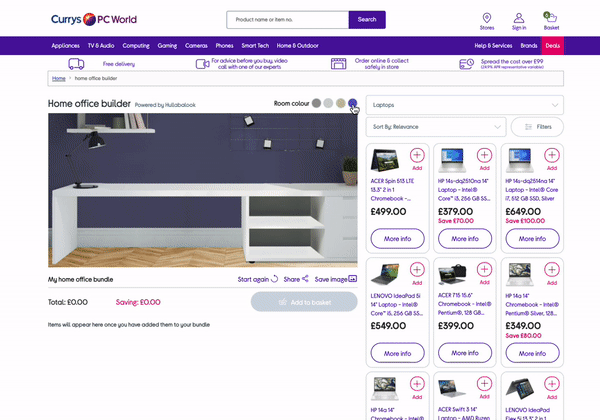
Are you thinking about personalisation in your solutions?
I feel like the word personalisation is overused in the retail space, or what people mean by personalisation differs a lot, but we absolutely do have personalisation built into a lot of our technologies.
For example, on the Currys website we have a kitchen builder. If you add an LG fridge and then you move over to dishwashers, you’ll see LG products before you see anything else.
If you select a red kettle and then you move to toasters, we will show you red toasters first.
We will try and show you the same brands, because we think that it’s much more likely that people are going to want to buy matching things or to buy from the same brand.
We can also look at what people are clicking on and learn from that in the session and then change the way that our products are ranked on listings pages on the basis of that.
That’s one level of personalisation that we do.
I would really like to get to the point where we’re working with retailers to do what I call ‘personal personalisation’, rather than it just being completely algorithm driven or in-session action driven.
For example, there’s zero technical reason why my version of a retailer’s website had to look the same as someone else’s.
I might only ever shop across two or three categories, so the first thing I see in the mega navigation should be different to what someone else sees.
I also think that people should be able to give the retailer more information. A lot of the time when people talk about personalisation at the moment, what they’re actually talking about is some sort of segmentation.
It’s personalisation but it’s not actually specific to me. I feel like this is a trick that retailers are missing because they actually have a lot of data about a customer based on what they’ve already looked at on their website.
If I select a certain size when I’m on the tops section of a website, why isn’t that preselected when I go to jumpers? It doesn’t make any sense.
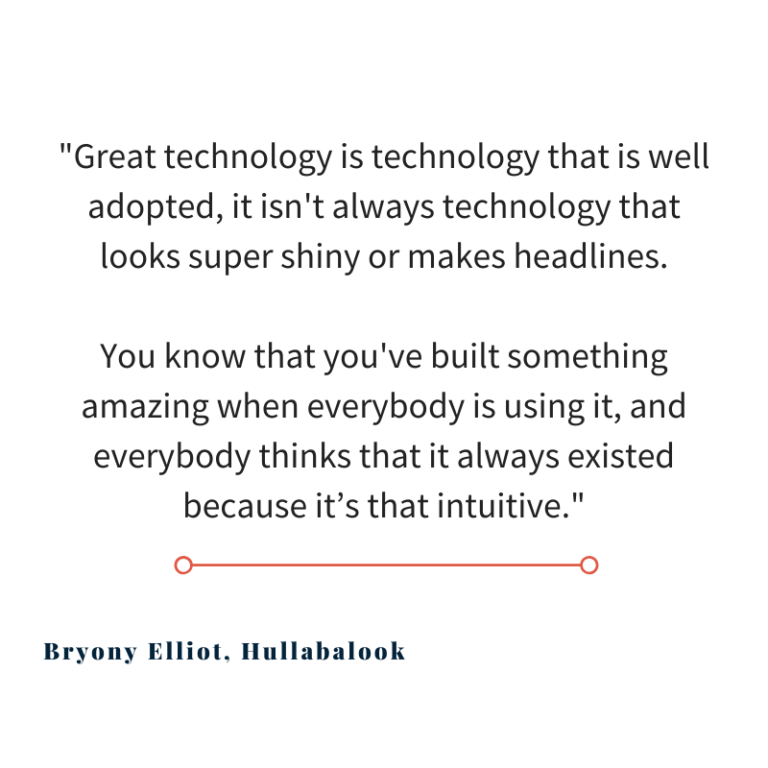
Why haven’t retailers taken this approach yet?
The way that most retailers’ websites work is that they have a backend which is where all the data is – all of the product data and the user data and so on. Then they have the front end, which for a lot of retailers is a very thin layer of pictures and text.
Every time you do anything on the website like click on a filter, it makes a call to the backend through an API, does a calculation and brings back the information. That whole process of making API calls can be quite slow. In order to do this very high level of personalisation you’d have to do an awful lot to them.
The downside would be that the websites would be pretty slow, and retailers would be very worried that they would crash.
However, they’re doing all of the calculations in the wrong place, and they’ve got all of the data in the wrong place.
Hullabalook’s platform takes all of the retail product data, stores it, keeps it up to date, processes it, attributes it, and packages it all up with the front end and algorithms into a little bundle, and then we deliver it via a CDN. Everything happens in the browser which means we can do all of this stuff super-fast with a high level of performance because we’re not making any of those API calls.
Technology has moved on so much that people don’t realise how powerful browsers are now. A Chrome browser has probably got more computing power in it than an entire laptop did a handful of years ago
Again, there’s this very legacy thinking that things have to be architected in a certain way when they really don’t.
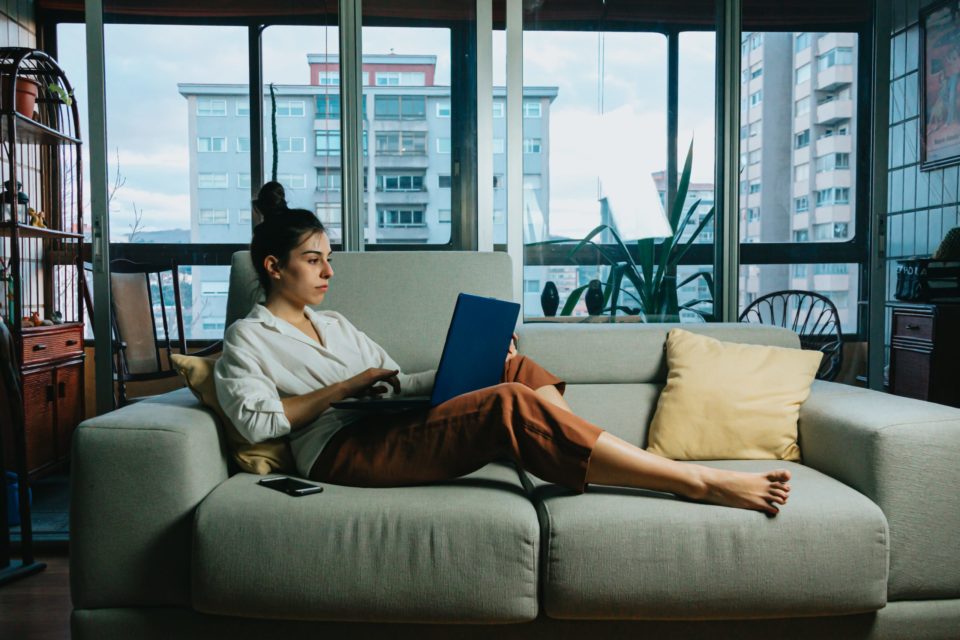
Do you have any views on where ecommerce is going?
There are some things about online retail that just haven’t changed since Amazon first appeared.
If you put the Amazon URL into the Wayback Machine, which is a website that archives old versions of websites, you’ll see that how it looked 20 years ago is not that dissimilar to how it looks today. There are product tiles, top nav, left-hand filters, and sort by price low to high or high to low.
When you go onto a retailer’s website today, you’ll see that more often than not the product tiles are a portrait shape.This is because Amazon originally sold books. Books are reliably the same shape. But nothing else is. Yet, we still look at all products as if they’re these neat little books.
But why do product grids have to look the way they do now? Why can’t they be three-dimensional? Why do I have to sort something by size or colour? Why can’t I have size one way and colour the other way?
One of the things that I’ve observed in the market and I believe will happen more and more is that what we consider to be high street brand retailers will start selling everything. I think that they will all become like mini Amazons.
I think that we will see appliance and electrical retailers diversify and start selling all sorts of things that we wouldn’t have thought they would sell. We’re already seeing most of the big fashion brands are now selling furniture, and they’re going to start selling toys and then they’ll start selling outdoor garden furniture, and then they’ll start selling fitness equipment. I think we will see that more and more.
With all of those big name retailers there’ll be much less distinction between their category offerings. Therefore, I think the most important things will be user experience and loyalty. It’s going to be absolutely critical that they can keep their customers, because if you can buy anything from anyone, why are you going to shop with brand X over brand Y?
Brand values will be part of this. Customers will be asking does this brand speak to me? Do I see myself in it? Do I believe that they’re supporting my values?
Where is my money going? How are they paying their staff? What’s their environmental policy?
The other part of it’s going to be the user experience. Which website gives you a better customer experience?
I think it’s going to be those two things that make the difference, because there’s only so much that can happen with price. A lot of the things that were differentiators in e-commerce like how good the payments processing is, how good logistics is, how quickly they could deliver to you are all becoming more and more similar.
So, what does that leave? It leaves the brand values and the online experience.
Are you considering new technologies like VR?
I think VR is brilliant.
I love it, but I think that VR is a really interesting technology that hasn’t quite found a solution yet.
You can have great technologies that don’t have a solution and you can have problems that don’t have great technology and really you need to find this intersection.
In order for VR to be really useful for online shopping everybody has to have a VR headset. What’s the thing that’s going to get everybody to buy a VR headset? A great online shopping experience isn’t going to get people to buy a VR headset. It has to be something else that gets people to buy a VR headset and then once they all have a VR headset, then we can create a great virtual reality shopping experience.
There might be more opportunity for VR in a store because you can then give people a VR headset to put on, but do they really want to be in the real world and then go into a virtual world?
People often ask about the future of retail and always want to know about VR and AR and stuff like that. I think these are amazing technologies, but I actually think that almost always software innovation follows hardware innovation. If you really want to try and predict what the future is going to be, what you need to be looking at is what’s happening in hardware. And then what you actually think is going to take off.
VR is a hardware innovation looking for the right software application to make it ubiquitous. Nobody has come up with the right software innovation for that yet, but they will.
I think that there are lots of things like foldable phones where the hardware’s there, but are we going to buy them? Because if it’s conceivable that in two years’ time 40% of the UK population will have a foldable phone then that completely changes online shopping.
We can introduce you to amazing companies like Hullabalook that can transform your retail business and increase your sales. Get in touch to have a chat with our retail consultants.

